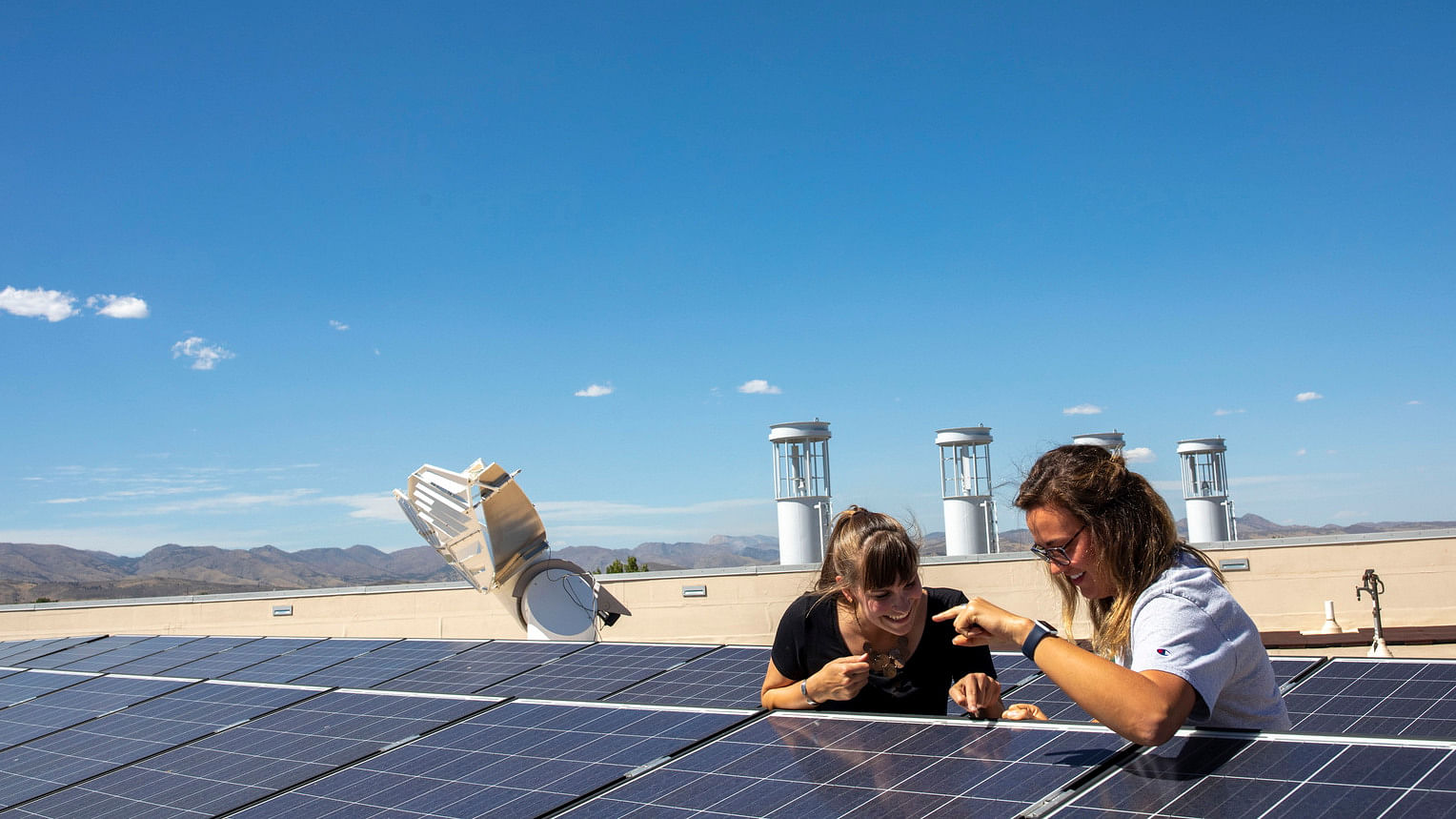
Renewable energy sources like solar and wind power are widely regarded as the panacea to solve the world’s looming climate change crisis. But not so fast, experts say.
Concerns are mounting that rapid scaling up of such technologies could prompt a resource crunch, trigger serious reliability issues and worse, lead to power blackouts if the technologies are not properly integrated into national electric grids.
The issue is of particular relevance for India, which is on track to reach its goal of 175 GW of installed renewable capacity by the year 2022 and upto 450 GW by the year 2030. According to the central government, India’s total renewable energy installed capacity (excluding hydro power above 25 MW) had reached over 89.63 GW as of 31 October.
The Indian government added that the last six years have witnessed the fastest rate of growth in renewable energy capacity addition among all large economies, with renewable energy capacity growing by 2.5 times and solar energy expanding by over 13 times. However, it is this exact rapid growth which could catalyze future problems, not just in India but in other countries as well.
Also Read | The idea of ‘green growth’ is flawed. We must find ways of using and wasting less energy
Experts acknowledge that solar’s rapid growth is linked to an overall decline in costs. According to Dustin Smith, executive director of SolarTAC, a Colorado-based solar technology accelerator, capital expenditures for solar was around $7.50 (Rs 357) in 2009 in the US. Now, it costs between Rs 43 and Rs 73, he pointed out. “That’s a 500% reduction. That’s really good,” he said, speaking during a virtual briefing on combating climate change organised by the US State Department for foreign journalists.
Plummeting prices also meant that the number of people in the world who do not have access to electricity has fallen below one billion (or 13% of the worldwide population) and the numbers are going further down, added Dr Jeff Logan, Associate Director of Energy, Policy, and Analysis of the Renewable and Sustainable Energy Institute (RASEI) and chief analyst at the US National Renewable Energy Laboratory (NREL).
But problems start to creep in when renewable energy is deployed on a larger scale. For one, according to Dr Logan, integrating large scale renewable energies into a national power grid is no simple matter. “It requires operating the national grid differently. You often have to do detailed studies of how the grid will function when you have a lot of renewables on them – a lot of wind and solar especially,” he said.
As per a grid integration study conducted by NREL and with Indian partners to understand what would happen if India met its goal to install 175 gigawatts of wind and solar by the year 2023, researchers found that India had to lower the power being generated from its coal points to the point that it was becoming financially unviable.
“At the same time, solar and wind cannot effectively supplant coal because the weather cannot be expected to cooperate and provide electricity whenever you need it,” he said. “So, sometimes it’s cheaper just to get rid of or curtail solar energy, rather than shut down your coal plant completely.”
An NREL sub-study in Karnataka, for example, found that solar output was especially low annually across days in July, mid-October, early November and at the start of December. Wind power output dropped from October to mid-May and again from late August. Hydro power declined by half in July.
This is something that the Indian government has taken note of, Dr Logan added.
Scaling up also inevitably results in reliability issues, Smith added. “The event that happened in Texas this last winter where the power grid went down, there’s lots of blustering about whose fault it was and what caused it. The reality was it was a human error,” Smith said.
“The piece that got missed was just how fragile an AC grid really is, and what everybody missed was that every time you add complexity to the grid, you add a reliability issue. So as solar systems become more reliable and more cost-effective, the grid is actually going to go the other way unless we do something very specific about it,” he added.
Dark Side of Renewables
Scientists also expressed concern about the dark side of renewable energies, notably what to do about wind turbines, solar panels and batteries which have reached the end of their life. Of equal concern is sourcing material for solar and wind. “We need to come up with alternatives for a lot of the critical supply chain materials (or rare earth materials) that go into the fundamental devices in all advanced technologies,” Dr Logan said.
While rare earth materials like lithium and cobalt are not necessarily rare, they are concentrated in certain parts of the world. Dr Logan pointed out that they are often produced in in unethical ways, sometimes through the exploitation of child labor. “They [also] do tremendous damage to the environment when they are being extracted. So we have to come up with ways to solve that problem,” he added.
It is a problem that Smith agrees with. “We’ve got to find a way to recycle panels with as little human contact as possible, because that’s how you reduce cost and get things turned around. Because eventually we’re going to run short of certain things,” he said.